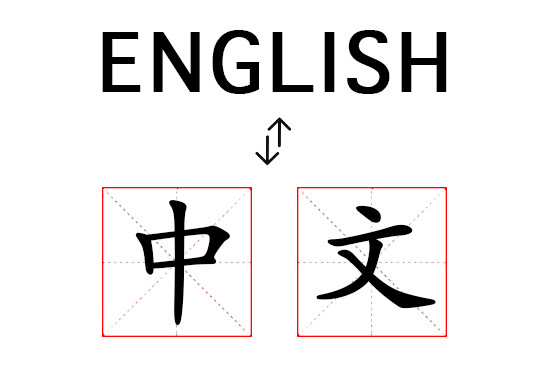Recently updated on February 21st, 2024 at 08:09 pm
For businesses expanding to the Chinese market, perfectly translated and localized content is, without doubt, a primary focus, especially when it comes to satisfying the needs of customers or followers. However, the Chinese language is considered the most difficult and complicated language to master. It’s not an easy task to translate English to Mandarin professionally.
💡 Understanding the differences in sentence structure, grammar and culture is vital to translate English to Mandarin accurately.
3 Grammatical Differences Between Chinese and English
#1 Structural Differences
Chinese grammar is very different from English grammar in sentence structures.
In Chinese contexts, a sentence is usually a subject + when/where + verb + object, where in English, the adverbs are usually used at the end of the sentence.
For example:
English: I have breakfast here every day.
Chinese: I every day here have breakfast.

Therefore, you can break the English sentence by cutting off the last part (here every day), it would become “I have breakfast”, and the sentence is still complete. However, you cannot do so for Chinese (or at least in the same way the English sentence is treated), as it would become “I every day”, which is an incomplete sentence.
💡 This also causes challenges for Chinese video subtitle translation as sentences are usually broken into different lines to fit the screen.
In addition, the Chinese writing system usually takes up less space than English characters because there isn’t any space between characters. Characters can be used as a word or a sentence depending on the context.
FAQ
Is Chinese grammar similar to English grammar?
Yes, Chinese grammar and English grammar share lots of similarities. In Chinese, the basic sentence structure is SVO (subject + verb + object), which is the same as English.
How can I translate a document from English to Mandarin?
There are several ways you can translate English to Mandarin:
· Hire a professional translator
· Use online translation tools
· Use a translation app
What are some common mistakes made when translating from English to Mandarin?
Here are a few common mistakes that can be made when translating from English to Mandarin.
· Word choice
· Grammar
· Idioms and expressions
· Cultural differences
#2 Formatting Differences
As mentioned above, Chinese sentence line breaks are almost impossible to do correctly if formatted by a non-native speaker. This also applies to instances where they need to use bold, underlining, or any other effect for the fonts. For native speakers, it’s easy to spot instantly the issue and be able to tell that it’s done by a non-native.
💡 Therefore, if you are having your translations completed by any Chinese language service providers, make sure they use native speakers.
A case in point is the formatting of book names.
In English, book titles are typically italicized or placed within quotation marks.
For example:
- Italicized: The Great Gatsby
- Quotation Marks: “To Kill a Mockingbird”
In Chinese, book names are usually presented in standard Chinese characters without the use of italics or quotation marks. Punctuation, such as commas or colons, may be used to separate elements within the book title.
For example:
- 《红楼梦》 (Dream of the Red Chamber)
- 《活着》 (To Live)
#3 Cultural Differences
In Chinese, people have different ways of writing names, addresses, dates, etc. Misunderstandings can happen if the translator is not aware of these differences.
For example, when writing addresses, unlike in English, where they start from office number, building name, street number, city, province, and country name, in Chinese, it is the opposite way around.
Another very common instance is the writing of Chinese names.
In English, it is always the first name followed by middle name if any, then last (family name). In the Chinese language context, it’s always family name + given name. For instance, a Chinese person named 王小刚 (Wang Xiaogang), while Wang is his family name and Xiaogang is his first name (given name).
For Chinese family names, keep the family name and the given name together as single words. So, “Wang Xiaogang” is correct, whereas “Wang Xiao Gang” and other variations are wrong.
5 Tips to Translate English to Mandarin

Understanding the above key differences help a lot to translate English to Mandarin. The translation from English to Mandarin Chinese is complicated and the correct Chinese writing grammar and rules must be adhered to.
Here are some golden tips to be aware of when you are translating from English into Chinese.
1. Amplification
Adding words or phrases in the translated text.
Examples:
As soon as I arrive there, I’ll write to you. 我一到那儿,就会给你写信。 (Add ‘letter’)
2. Omission
Removing words or phrases from the original text.
Examples:
He looked gloomy and troubled. 他显得忧愁不安。 (Conjunction omitted)
3. Inversion
Changing the sequence of the translated parts.
Examples:
rich and poor 贫富 (translated as poor rich)
the members present 出席的会员 (translated as the presented members)
4. Conversion
Changing one part of the speech to another.
Examples:
He is a good listener. 他能倾听别人意见。 (Noun to verb)
They thought differently. 他们的想法不同。 (Verb to noun)
5. Negation
Changing negative or positive or vice-versa.
Examples:
Won’t you sit down? 请坐下好吗? (Negative to positive)
The fever persisted till the next morning. 直到第二天早上,发烧仍不退。 (Positive to negative)

Digital Entrepreneur and Co-Founder of Chinese Copywriter
Having lived and worked in Europe for 6 years, Ting returned to her hometown Guangzhou with the mission to help international businesses succeed in the Chinese market. With 15 years of marketing / web design background, Ting has proven records of digital marketing successes in China. Ting has been featured on diverse mainstream medias in China, including Southern TV, Sina News, Toutiao News, GRT News, etc.



